Video Menu
My Favorite Videos
My Favorite Videos
Making Your Golf Swing Feel Natural w/ Baseball Drill - Live Lesson
Sorry, you need to be a member to access this video.
You Are Just Seconds Away - Become a member here!
Already a member? Log in now

Have you ever felt like your golf swing doesn't feel natural? Perhaps you played baseball and hit the baseball fine but consistent ball striking in golf is eluding you? Then this is the video for you! Learn how to tame your arms and tap into your hips for a near limitless supply of power in your golf swing.
All right.
So you tell me I'm a 90% arms, 10% body guy.
Okay.
So I've been working for the past month to try and reverse it.
Okay.
And I think it's better, but I can't really hit a golf ball yet.
Like it looks better to me.
Yeah.
I'm sticking with it, but it's hard for me to hit it solid doing that.
So I know, you know, I was at least hoping maybe the arms might clean themselves up a little bit as I fix the body.
And I, I just don't know if mine are cooperating, but yeah, just curious to see what you think it looks like.
Okay.
So typically when that happens, when you're making these adjustments and you're starting to feel stuff in your body and trying to take the arms out, when, when that breaks down and you're not able to make really good contact or something just feels wonky, typically one of two things, 90% of the time, one, you're just thinking about so much stuff that, you know, it's hard to get your brain out of the way and be able to make contact because you're thinking about using your body, which obviously isn't directly connected, you know, immediately to the club.
So you, you kind of get lost.
You're kind of thinking down here and, and you hit the ball with the club, obviously.
So that, that typically happens.
And the second thing is if the arms still take over and you don't realize it, then something is not loaded in the body correctly.
And it's typically the right hip.
So it's one of those two things, nine times out of 10.
So that's my first thing to plug in your brain to get you thinking.
But let's take a look at it and see where we're at.
Okay.
All right.
I'll try.
No worries.
Maybe I'm 80, 20.
Okay.
Can you see me okay there?
I can see a great.
Okay.
Can you do one face on for me?
Yeah.
Okay.
So let's, let me show you what's going on.
So we're definitely still using the arms a lot.
And so I want to help, help you understand where that's happening and so that you can start to recognize it on video when you're working on your swing.
And then I want to show you what we need to do to get the body loaded so that you don't feel like the arms have to do so much and get so work.
So let me show you this.
Okay.
So as we go back, set up, not too bad there.
We can stand a little bit taller through the legs and bring the hips in a little bit closer.
You know, as you stand a little taller through the knees, you can bring your hips forward just a little bit, but that's not like a deal breaker.
It's not like you're not going to be able to play golf from there.
You increase the knee flex quite a bit there though.
So then as we go back, see how they see how you're go back.
Yeah.
Rolling over kind of.
Yeah.
See how, how bent the right arm is and how inside the club is.
Yeah.
So this is always just left side push.
Well, not always.
You can bend the right arm a little bit too, but in your case, you're swinging the left arm across the body.
Do you see how your peck, like if you had a logo on your shirt, it'd be gone.
Yes.
You couldn't see it.
So I'm going to help you understand how to fix that because that immediately starts to load up these arms and shoulders.
And then it's virtually impossible to break out of that trend on the way down to not fire the arms and hands.
Cause we're loading them immediately off the ball.
And what we need to do is start loading that right hip immediately off the ball.
So, yeah.
So now we're just really deep and flat.
Yeah.
I hate that.
And we're going to fix that.
and then you're across the line and then shoulder dive.
Okay.
Yeah.
Okay.
So the legs are pretty placid.
I would call it.
They're not working nearly as hard as they need to.
And this is why you, you have a hard time taking your left shoulder out of it because you don't feel like if you didn't use your arms like this, that you'd have any power.
And so that's, what's going on here.
So now the arms kind of start to take over because the legs aren't doing what they need to get a pretty big hip slide to the right here.
Yeah.
that's, I guess that's my attempt to sort of load that leg, but yeah.
And I want to, I want to give you a completely different way of thinking about it.
Cause then we kind of have this drive.
So the legs are like totally taking a nap here.
Okay.
So you are going to do some fun stuff.
Okay.
Give you a different way of thinking about how to honestly teaching people how to use their hips is the most important thing, but one of the most challenging things in all of golf.
And it's hard because the hips are moving.
You know, when you look at yourself on video, you're seeing it in 2d, right?
You're seeing basically this simple dimension here.
And then you look at it the other way and try to put those two together.
The hips are moving in 3d and it's hard for somebody to understand.
Well, okay.
My hip needs to go back and it needs to go this way and it needs to turn.
Like, how do you get somebody to understand that?
Right now?
You said you played baseball, right?
Yeah.
Baseball, hockey, everything better than this game.
Well, let's leverage some baseball stuff.
Because when you think about base, the baseball strike, I'm not a hitting coach when it comes to baseball.
Okay.
But I've, I've taught a lot of major league baseball guys.
And for whatever reason, most of these guys that I've taught have worked with Rod Carew is a hitting coach.
Right.
And obviously I think he's a hall of famer, but you know, and the stuff that they talk about the way that they talk about is a little bit different, but there's a lot of similarities when it comes to understanding how to put power into the swing.
And that's what you're struggling with is when you keep pushing this left arm across, you're doing this in search of power.
You're doing this in search of trying to feel like you've got something to hit with.
And that's why you can't get out of it.
Right.
And so you have to replace that power source of your arms with something else.
Otherwise you'll just kind of keep doing the same thing.
And right now as your legs kind of come through like this, they're not working.
So in baseball, they talk about this thing called squash the bug because they're hitting more off the back foot.
we know that we have to transfer weight, but you can still kind of use that same idea, just not hanging back on it.
But the thing I like about the squash, the bug thing is that it's teaching you to pivot, to rotate your pelvis from a loaded hip position.
So in baseball, I played ball for a long time.
I never had a hitting coach, one thing that I was always doing at set up is I was really loaded on this hip just naturally.
Right.
You're just naturally here and your arms and shoulders are naturally more relaxed.
Right.
Cause it's not like you're going to be like this.
And this is the difficulty with golf.
The backswing is generally what sets everything off on the wrong path because we start moving the club.
We're so fixated on moving the club first that we start doing that.
But I want you to think about this like a baseball swing and a baseball swing.
You start at the top of the backswing, but what are you doing with your arms and bat and hands?
Right.
They're chilled out because you're know that you're going to get all of that initial move from here.
Right.
It's that hip pivot and golf is tough because one, we have a backswing so that we start to load up our arms too soon.
And we don't get the benefit of that step.
Right.
But I want you to practice.
We'll start kind of like this.
Right.
So you're going to be up here and just loading up that right hip and then using that to help you turn.
And then your arms are going to stay back and then they release.
Right.
That sequence is the same in the golf swing.
The left side provides control.
The right side adds power.
What I want you to do, what you're just doing there, you're still turning your rib kit, your upper body.
I want you to keep your upper body back and just turn your hip.
See how my arms are still back.
Turn them further.
So go ahead and use that right hip to drive.
There you go.
There it is.
There we go.
That is the golf swing.
When it comes to adding power to your swing and getting the hips to sequence, getting the hips to lead the swing.
Because right now, you're, you're by the time you get halfway back, this arm's already getting loaded.
You know, it's normal to you.
So you won't feel the tension that you're creating, but then by the time it gets to the top, they're really tight.
And so that's when they, that's why you have this little right shoulder dive and the hips are just kind of following along.
What I want you to do is go to the top and feel relaxed, but you can't do that unless you feel a lot of load in that right hip.
Even more.
Go ahead and turn.
We're going to exaggerate this a little bit at first.
This is where the speed and power is going to come from in the swing.
Good.
So you can see your arms and shoulders are chilled out, right?
Yeah.
They're just going along for the ride.
And that's how they get that initial free fall in the, in the backswing or in the, in the transition.
So when you're making your swing, the feeling that you have when you're loaded up like a baseball player on your right hip, that's the same feeling.
I want you to replicate at the top of your backswing.
And that's what you're trying to create immediately off the ball, right?
You're right now, immediately off the ball, it's left side push and a big hip slide.
That's not loading this hip, right?
And this is where it's difficult to understand like the exact position and the way it moves at the hip because it's moving in 3d.
It's kind of difficult to explain in video, but I feel like if you're thinking more baseball where you're going to, you know how you're going to initiate that transition in baseball.
If you start trying to achieve that feeling so that you can do that move, that's how you're going to start thinking about the backswing.
So the backswing is not what, not this, right?
It's not what you were doing a slide in your hip.
That doesn't make any sense.
It's you're coiling.
This is how you load is as if you were going to hit a baseball, but the baseball just happens to be on the ground there.
See how your hips now loading instead of sliding, right?
So it's going to be behind me and taking the weight at the same time.
Kind of exactly.
So it's moving in 3d, but without me having to explain to you like the exact positions and angles and stuff, you're loading with a purpose because you know, in the downswing, if you're going to use that to help you pivot your hips, then you know what it needs to feel like in the backswing.
And that's really the goal is during that takeaway and backswing to start doing that right away.
It's like right now, your hip is fully loaded in what you're demonstrating and your hands are right here, which would be the end of the takeaway, right?
Yeah.
But you normally don't feel that loaded up at that point in your swing.
I don't.
It's hard for me to sometimes I try and get, I just can't do it once I have the club, you know, right?
You have to think about the golf swing.
When you think about mechanics and positions and things that you're trying to do, it doesn't work unless you're doing those things with a purpose.
Loading my right hip.
If I don't know what I'm going to do with it and how I'm going to use on the way down, it doesn't make any sense.
But now that you know how to use that to help you pivot your hips, it starts making sense during the takeaway, how you would want to load it.
So when I load it, if I'm loaded, I'm trying to open that thing as far as I can almost.
Well, there's a balance point here, right?
Like you look at somebody like Cameron champ or Justin Thomas, right?
Those guys on the tour, their hips are really, really open.
And they're, you know, the driver, they're like this at impact, foots way up in the air.
That's extreme.
And that's going to start putting you at risk for injury.
Right?
So you find the balance between the simplest check to keep you from overdoing it is if your right heel is still on the ground at impact.
you didn't go crazy with it.
Right?
So you can drive hard enough that that still stays down.
And then let it release naturally.
But use it to turn.
You're still kind of pushing laterally.
Okay.
Yeah.
now you're outside of neutral joint alignment.
I want you to think about turn.
Yeah.
I want you to think about turning.
Or that not your shoulders, just your hips, just drive your hips like this.
stand here and just turn your hips.
There you go.
That's the feel.
I never feel that.
I know.
I know.
Right.
And that's why I think this is going to be fun for you.
Cause you're going to start to feel how you can use your legs for power again.
So it's more of that than just driving all the way forward.
It really is turning through that way.
You have to get a neutral.
So it's doing both.
But what you were doing was a lot of lateral drive.
And when I told you just to pivot, you still got into neutral or close to it.
Right.
So you just have to, you have to shift a tiny bit.
There you go.
It's a little bit more weight.
So it's that kind of thing.
Yeah, exactly.
So it really is a pivot.
I'm really thinking of leg drive as this previously.
That's way too much lateral.
This.
Yeah.
And this is why, you know, teaching people how to push from the right side for power, especially the higher handicap golfers.
That's what they do, right?
They actually go to the top.
This knee stays buckled in and they push like this.
And that doesn't work.
So what I'm telling you is to take this hip and push it this way.
So from down the line, I'm, you know, baseball, I'm loaded up as I'm shifting to the left.
I'm pushing this hip forward and that's pushing the left hip.
Out of the way back behind me.
Yeah.
I mean, that is not something that's in my golf swing, as you can tell.
that's, this is what's missing for you to replace your arms as a power source.
It's to start to use your legs.
Is that a better pivot?
Yes, much better.
So keep doing that.
I want a video one.
And we're going to compare that to what you're doing before.
Show me one where you're going to push really hard off the right Shoulders are relaxed.
Just exaggerate one.
There you go.
All right.
That's what I wanted to see.
All right.
So now let's take a quick look.
Let's go to the last one.
Let's go to the last one.
getting, you know, swung through the hitting area by your hips, but your hips have to lead everything.
So now you can see where you would be, you know, roughly at impact.
This is, this was the one where you really exaggerated, where you really tried to turn as hard as you could.
Yeah.
So you can see your, you know, your left hips pretty much in neutral here.
The right hips.
You know, this is, again, this is the big exaggeration.
So this is like, you're trying to wail on a driver or something, right?
Yeah.
So go ahead.
So I was really sliding both forward and back instead of really getting the pivoting motion.
Correct.
Is that fair?
You were, it's, it's rotational.
You can't just rotate and you can't just move lateral.
You were 90% lateral and 10 % rotation.
And now we're kind of making it 70% rotation and 30% lateral kind of.
Gotcha.
Yeah.
It's very different feel.
I was thinking it was kind of trying to do it the wrong way, obviously.
Yeah.
So this will help dramatically.
So let me, so this is where your actual swing was.
So now as you watch your hips.
All right.
So this is where your actual swing, as you watch your hips and use kind of that, the tree or the gutter in the background.
Yep.
As your reference.
Big, big lateral.
Yep.
Haven't really, they're turned, but they're not really loaded.
They look pretty soft and weak so that you can't really do that.
So now you did, you made another big lateral shift, but there's not much rotation in there.
And that right leg, the right hip is just kind of chilled out.
And then it's all arms and shoulders.
And then what you, what you're going to start feeling again, this is like the extreme exaggeration where you're just up here and you're pivoting, driving this knee forward.
That's going to get your hips open fast.
There you go.
Try to keep your shoulders shut and just move your hips.
There you go.
Good.
That's it.
So now what you're doing in the backswing can't inhibit that.
And what I mean by that is if you're going back and you're starting to swing your arms and shoulders, your hips are going to lose focus.
They're going to get out of position.
They're going to lose that load.
This has to be your priority is thinking about what, think about it in the whole golf swing, the transition, the first thing to move is your lower body, right?
You know that if that's your number one priority to get the downswing started, then the backswing should be getting this loaded up first so that it's ready to go before you finish your backswing.
And this is how you get your arms and hands and shoulders to chill out because they're just going to the top to be relaxed.
The hips have got to do all of the work to get everything coming.
So as you start making practice swings with the club, you're going to start focusing on getting this loaded up so that I can drive.
And my arms and hands are just kind of nice and soft, but I'm focusing on loading up this right hip first.
My arms are really relaxed.
That's what's going to get you from taking the club inside anymore.
Because when you're doing this, this is all you're going to start to feel it, that this shoulder is loading up right away.
And now you're going to feel like my arms, just like when you're going to a baseball swing and your arms are nice and soft and relaxed.
That's your goal to get them to the top in that same position, but your hip is loaded.
So my first thought back is just load that hip.
Yep, exactly.
Now what?
I'm just like, you know, so.
Let your arms swing to the top.
Just let them kind of swing naturally, but you're focusing on your hips.
Okay.
So all I'm trying to do is load that hip.
Okay.
Again.
I have minimal tension in my arms.
Good.
Relax the arms even more.
And then go ahead and come down from there using the hip, the hip load to come down.
One more time.
Get that hip open.
Okay.
So you're still bringing your arms down there.
Let's take a look at that.
So I can walk you through it real quick.
That's how I feel like I just kind of didn't shift my weight forward either.
I just kind of made sure I'm trying to make sure I open going down, but.
Yeah.
So the left arm is more quiet there.
It's still working a little bit, but your right arm's not as folded.
But this is, again, you've been doing the same thing with your arms for a while.
So it's going to take a little bit to get the feeling where they don't have to do so much anymore.
Sure.
And do a better position at the top.
But let's go and look at the actual swing.
You maintained your tush line better.
But your arms, and they were better to start down, but not enough at the hips.
I actually turned really well there, actually.
That's a lot better.
Definitely maintained the tush line.
But your arms are coming along with it.
And so what I want you to start to feel to exaggerate this is let that heel come up off the ground.
So you're kind of forcing it in there to, like, stay down.
The right heel.
So while you're practicing, what we've got to do, we need to, right now the pendulum is on the arms swing side.
And we're going to swing it over here to the hip side.
We're going to go to the extreme.
We're going to really exaggerate this.
And then we're going to let it come back to the middle.
So to get it to the extreme so that you can really start to use your legs again, I want you to start to feel where, you know, as in baseball, right?
Like your arms are here, and then you're taking them back while you're going forward, right?
You're loading, driving, and pivoting.
And when you pivot, I want your arms and hands to stay back, your right arms to stay connected, and then you're just moving everything.
I'm doing nothing but turning my hips, all right?
There you go.
Good.
Yeah.
So my arms are doing nothing.
Literally nothing, right?
That's what they have to do during that initial part of the downswing.
And you're doing, you're still adding a lot of arms in your golf swing.
Sorry, in the transition, I'm adding too much arms.
Exactly.
Exactly.
So as you go to the top in your golf swing, you can do the same thing, right?
Go to the top, just relax your arms, leave them there, and just focus on your hip turn.
There you go.
So that would be the extreme, and that's what we're going to feel at first.
Let me record just one of those real quick.
Go ahead.
All right, let me show you that real quick, and then I'm going to show you.
So these, again, we're taking this to the extreme first.
With no arms at all, and they're just totally getting swung around.
And this is more just to get you to be able to wake up and feel how to load the hip going back and how to use that load coming down.
The arm's going inside there still.
We'll work on that.
Yeah, it drops way inside when I actually leave them alone, right?
Yeah.
And this is, again, this is the big exaggeration.
You want to get to the point where you're feeling like, okay, now I really am not using my arms at all.
And then you can see that they will stay back, and you don't have that big.
Before, you initiated the downswing with your right shoulder kind of driving down toward the ball.
That's what was, you know, powering the whole swing.
Now it's your hips.
Is that what made it go across the line, Chuck, was sort of my transition move more than the backswing itself?
No, it's because you're taking it way inside like this, and just the momentum of the swing arc is going to get it to want to come across the line a little bit.
Okay.
So this is better.
So now, obviously, we don't want to take it this far where we're actually getting our arms that far deep.
But so now, then you start to see how this stuff starts to tie together.
So if you let your arms swing way around, and then you're really aggressive with your hips, then you're going to start coming too far from the inside.
Okay.
And that's like as you transition from the mid-handicap to the low-handicap player, it's typically what happens.
Then you start seeing guys who, you know, they learn to use their hips, and they're really fast and aggressive with their hips, and their arms get really stuck.
And that's because you're swinging your arms still deep.
Now, as we go back to loading this hip and just feeling like our arms are going to stay more out in front instead of going around, and this is going to be the key, people start swinging their arms really around when they're going to use their arms and shoulders for power, because that gives you a big, long way to load up your arms and shoulders.
Now, your arms and shoulders, as you get used to this, are going to feel like they're not loaded up at all.
Just like in baseball, right?
Your arms, you're trying to keep your arms relaxed at the top, right?
You're doing the same thing in golf.
My arm's just going to stay out in front and go more up.
That's the exaggeration.
Good.
I can do that.
That's a little bit too much wrist set there.
Okay.
So you've got to let it swing.
And it's just going to start going up.
There you go.
Is that better?
A million times better.
Do it again.
If I don't have to wrist that, I can just kind of let it swing up there.
Exactly.
Do it again.
All right.
Take a quick look at that.
So that probably feels pretty extremely exaggerated, but you'll see it's not.
Look at the club in the back.
Take away.
Okay.
So not a lot of set.
Just swing it out there.
And then from that point, where do I go?
You see a lot of swing up.
Don't think about it.
Yeah.
You did it right here.
You're supposed to be right up the forearm there.
That looks okay, right?
Looks perfect.
Weird.
This is all just tension related, right?
It's what muscles you're trying to load.
So now you're in a perfect backswing position.
And this is because your arms and shoulders are more relaxed.
But you're replacing that tension in your arms and shoulders with that tension in your hip so that you can use your hips to bring the club down.
So you can see that backswing is a billion times better.
Never been there before, Chuck.
So the trick to this, to keep these arms relaxed and keep the arms from swinging way deep and end up in this sexy position, is that you have to load those hips going back so that you can have something to come down with.
Otherwise, I'm going to feel too weak if I just put it there without loading the hips.
Exactly.
It's going to feel weak.
And that's why you won't stick with it unless your hips are loaded.
Gotcha.
Then you'll feel like, oh, no, I have to load my arms because that's the only thing I have to power my swing with.
And even that, like your arms are still swinging more than they need to.
It's going to be very little with the arms.
Yeah, that's plenty.
Good.
Don't look out there.
Try to keep your shoulders and head back as you start down.
Just turn the hips.
There.
That was it.
Keep turning that right.
Don't turn your head and shoulders.
Just turn your hips.
And keep shifting to the left.
Get all the way over there and get that hip out of the way.
Better.
All right.
So, here's what you've got to do.
So, I want you to practice little baseball swings, right, where you're going to be just kind of swinging up here because it's easy when our bodies are upright to just use our hips to turn.
Exactly.
And start to feel how that's going to add power and rotate your upper torso to bring the club down to the ball for you.
And pay attention to what you feel in your arms and shoulders.
How they're soft to get that dynamic stretch while the club is still going back and your hips are going forward.
Your arms and shoulders have to be relaxed for that to happen.
But as you stretch those muscles, that's what helps them bring them down faster without you having to work hard to bring them down.
Then just start making swings like that, you know, where you're just going ahead and letting the club release.
And then just start tilting it down slowly but surely, where you're going to get down to the club being, or the ball being down on the ground.
So, this is just to get you to get your hips to work.
Then, during the backswing, I want you to start working on your arm, like you saw there, your arms just going, what they're going to feel like just straight up and down to you, rather than swing them around so much.
They're just barely moving.
And you'll be able to stick with that when you feel that your right hip is loaded.
Yeah, good.
So, does this make sense?
Yeah, it totally makes sense.
I, you know, I see your videos, it makes sense.
I'm like, yeah, that's totally it.
But until you, like, watch me do it, I feel like I can't figure it out, you know?
So, I really appreciate this.
It helps a lot.
Sure.
So, yeah, let's get those hips working, chill out the arms and shoulders, start working with that, watching how the club's going to feel very different.
It's not going around anymore, because you're not trying to load your shoulders, you're not trying to load your arms, you're trying to load those hips, and so it'll feel very different.
But this is all going to start to be able to chill out and relax, and this is going to wake up.
And that's where you're going to start getting the power that you should have back in your swing.
Yeah, I think the rotational part of the hips, I really didn't get.
Not specific numbers or directions, but, you know, I was trying to kind of shift laterally without truly getting the pivoting, loading, and unloading.
So, I think that'll help.
It's good.
Yeah, I'm glad we did this lesson.
That's going to help you understand this a lot, to get those hips to work.
That's going to be huge for you, because that is the engine of the swing.
They have to work.
Yeah, cool.
All right, man.
Thanks, Chuck.
I really appreciate it.
You bet.
Have a great weekend.
You too.








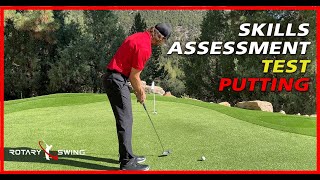


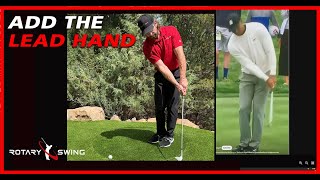


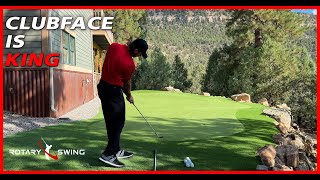








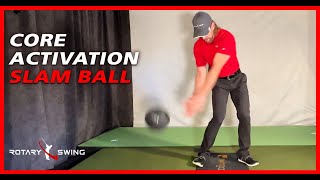





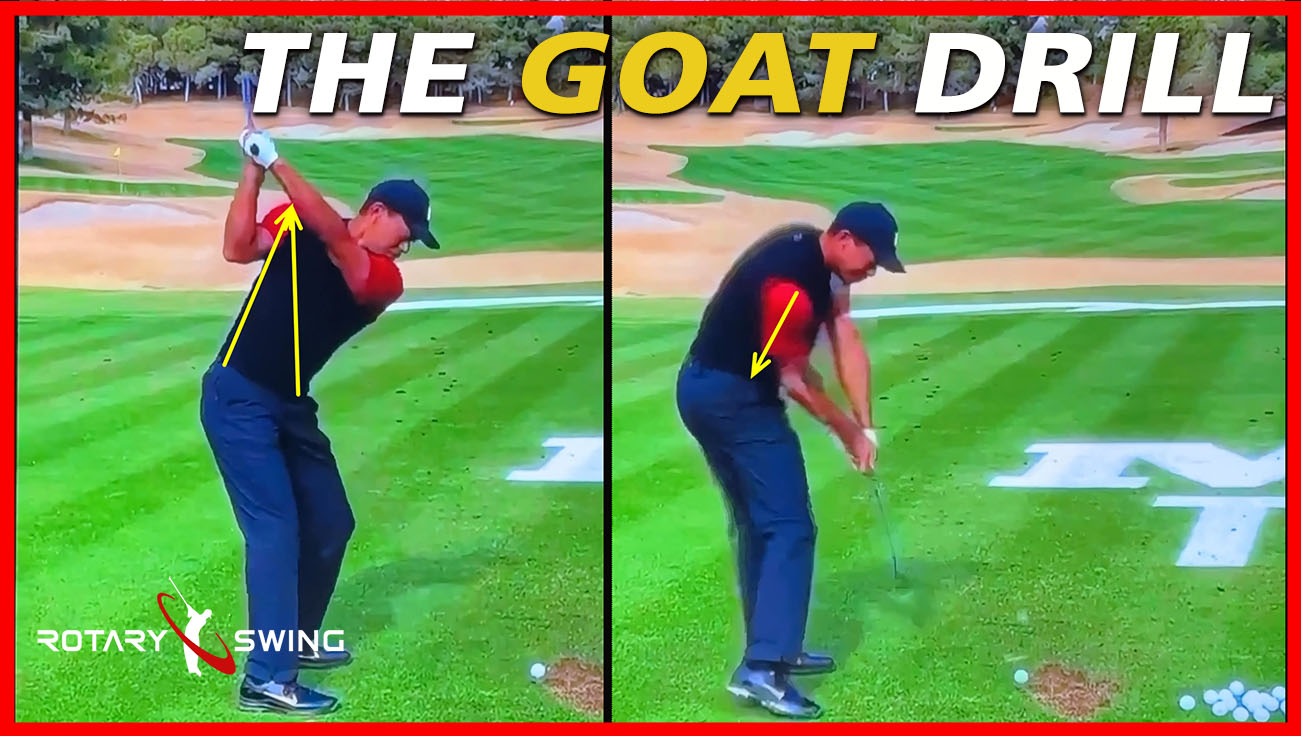


















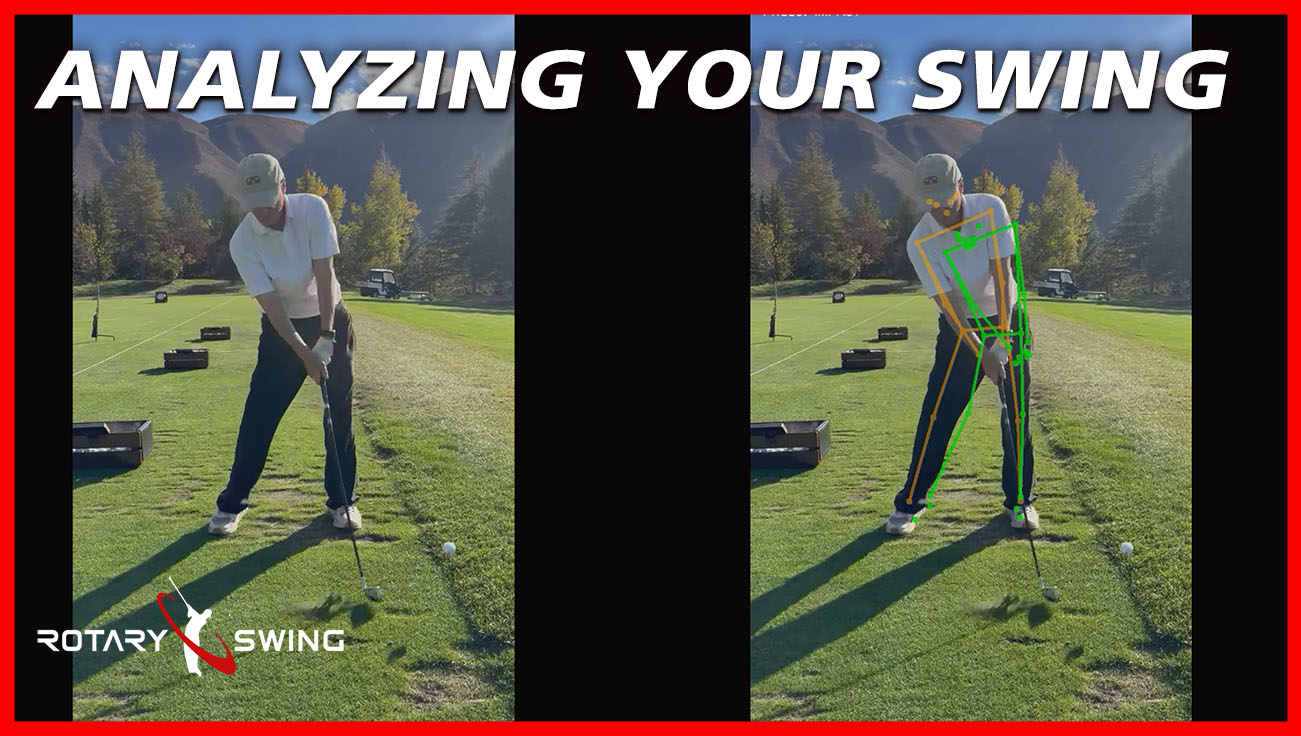









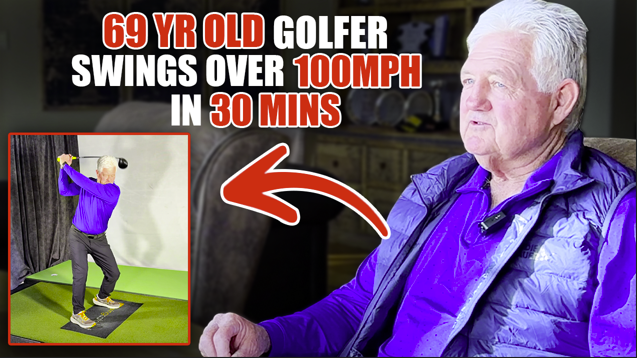
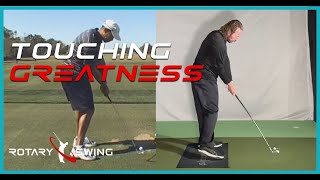





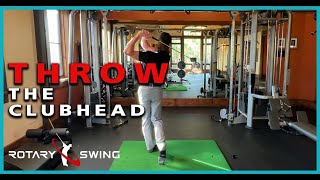







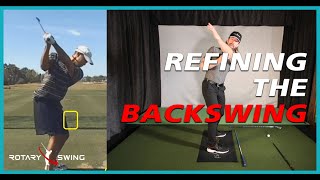







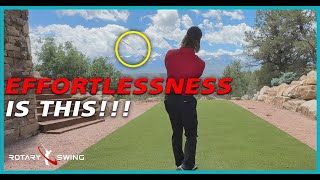
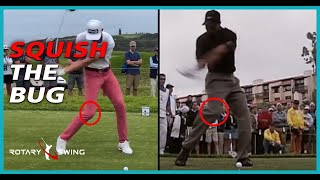
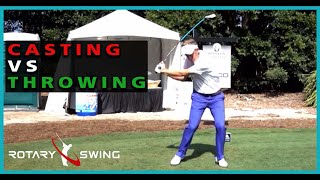



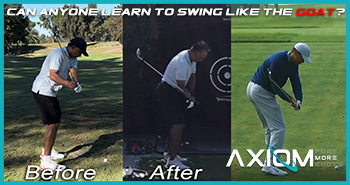






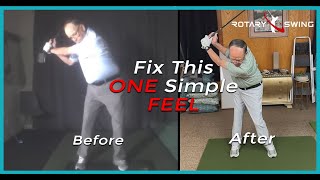











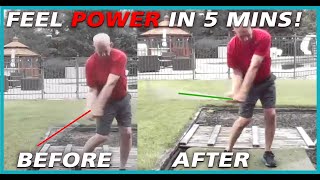


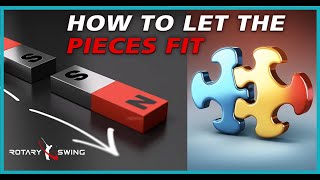

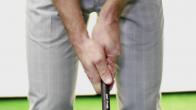




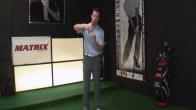













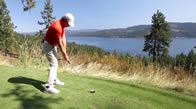



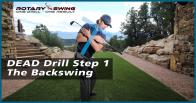

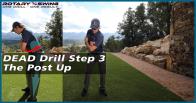










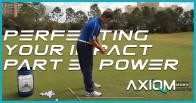











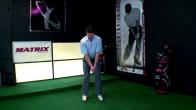



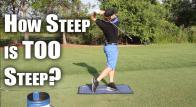


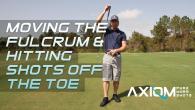



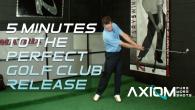

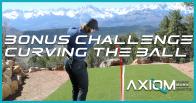






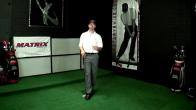









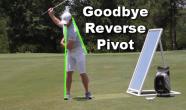





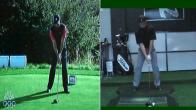



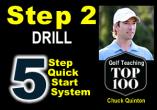






















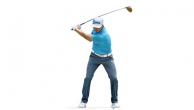

































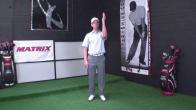




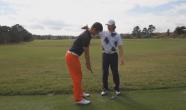





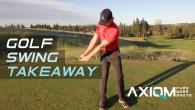









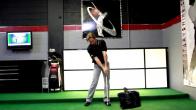



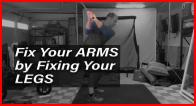


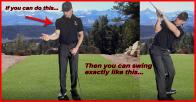




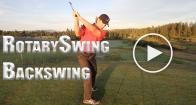

















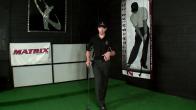





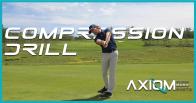
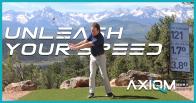
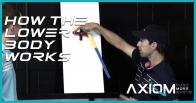












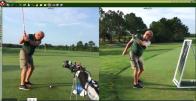






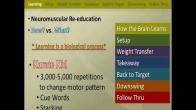
















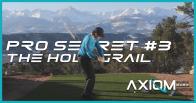

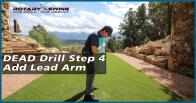


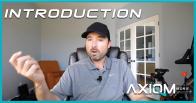

















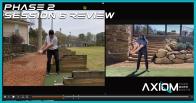







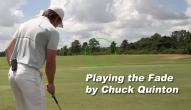











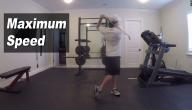

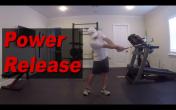
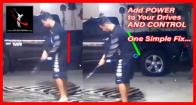

















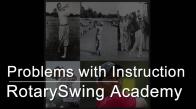



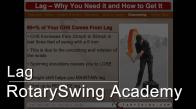



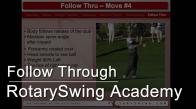






















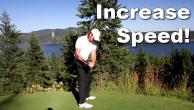



















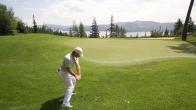





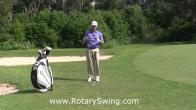











William
Craig (Certified RST Instructor)
Asle
Craig (Certified RST Instructor)
Kieran
Craig (Certified RST Instructor)
Tom
Craig (Certified RST Instructor)
Michael
Craig (Certified RST Instructor)
David
Craig (Certified RST Instructor)
Daniel
Craig (Certified RST Instructor)
Pete
Craig (Certified RST Instructor)